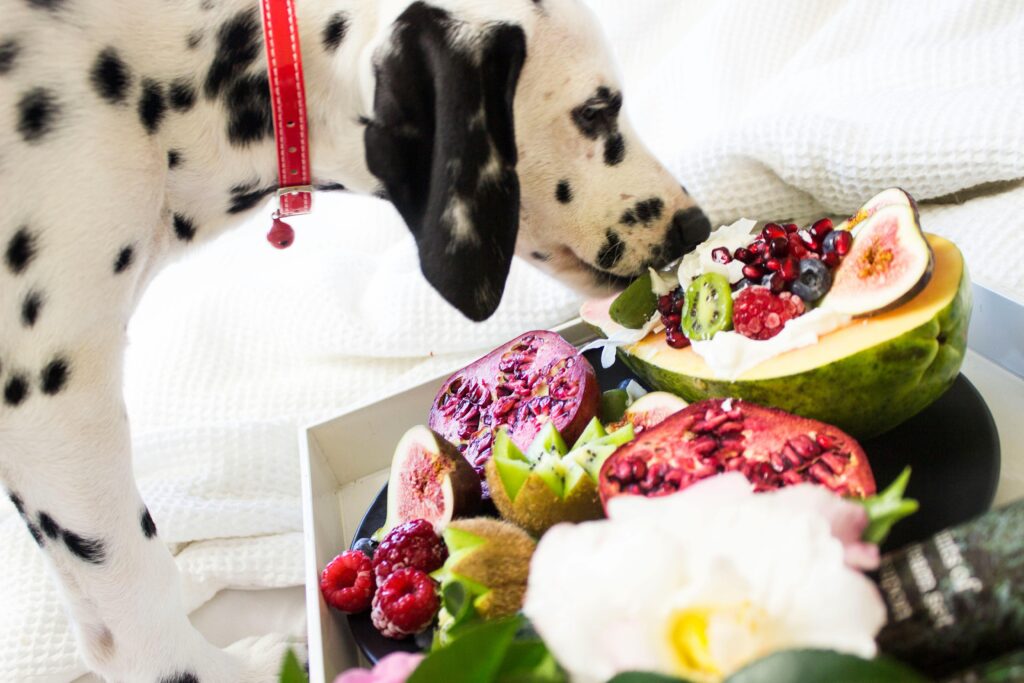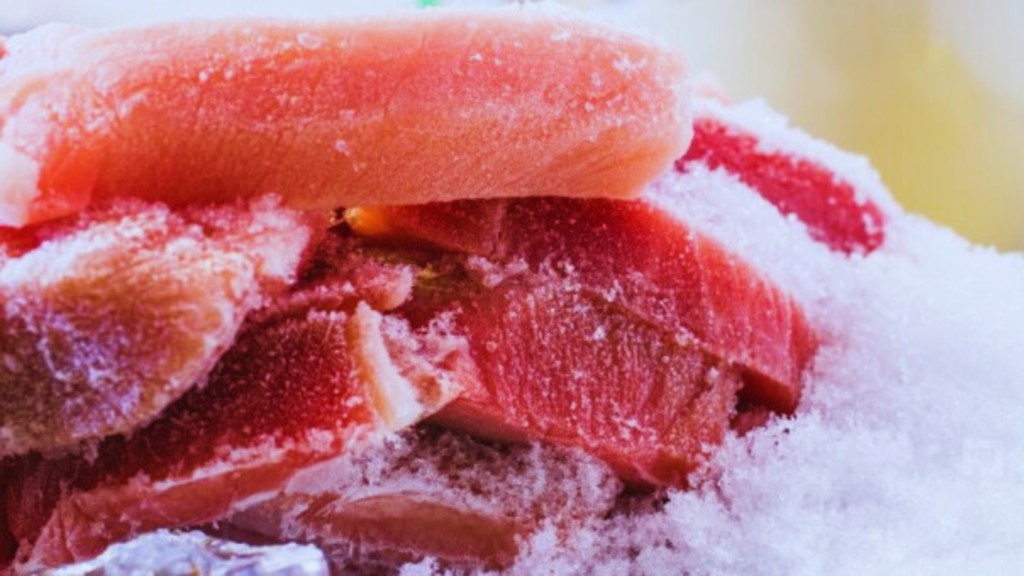| Summary: Many vets discourage raw dog food due to bacterial risks, unbalanced nutrition, and potential bone hazards. Raw diets may expose dogs and owners to Salmonella, E. coli, and parasites. Cooking food eliminates these dangers while ensuring a safer, nutritionally complete diet for dogs. |
The raw dog food trend has taken the pet world by storm. Many owners believe that feeding raw meat, bones, and organs mirrors a dog’s ancestral diet, leading to healthier coats, stronger teeth, and better digestion. However, most veterinarians disagree with this feeding approach, citing risks like nutritional deficiencies, bacterial infections, and choking hazards. So, Why Few Vets Say Raw Dog Food is a Good Idea?
Studies show that 30-50% of raw-fed dogs suffer from imbalanced nutrition, and the FDA has detected harmful bacteria in 20% of raw pet food samples. I’ll explore why most vets oppose raw diets, the potential risks, and safer alternatives that provide similar benefits without the dangers.
For detailed guidance on ensuring the perfect collar fit for your St. Bernard, check out the Best Practices for St. Bernard Collar Adjustment to keep your dog comfortable and secure.
Blog Highlights
ToggleQuick Fix FAQ Table
| Question | Quick Answer |
| Is raw dog food safe? | It carries risks of bacterial contamination and nutrient imbalances. |
| Can dogs digest raw meat? | Yes, but improper preparation can lead to health issues. |
| What do vets recommend instead? | Balanced, cooked, or commercial diets meeting AAFCO standards. |
| How to make raw food safer? | Freeze meat for 2 weeks or lightly cook it. |
| Are bones safe for dogs? | Raw bones can be risky; cooked bones should always be avoided. |
The Raw Dog Food Movement: Why Owners Love It
Here’s Why Few Vets Say Raw Dog Food is a Good Idea: Raw feeding, also called Biologically Appropriate Raw Food (BARF) or the Prey Model Raw (PMR) diet, is based on the idea that dogs should eat uncooked meats, bones, and organs like their wild ancestors. Proponents claim it leads to:

✔ Shinier coats due to high-fat content
✔ Better digestion from natural enzymes
✔ Improved dental health from chewing bones
✔ Increased energy from unprocessed proteins
A survey by the American Pet Products Association (APPA) found that 12% of dog owners are considering switching to raw diets. Despite the enthusiasm, most veterinarians and pet nutritionists remain skeptical.
Ensure your Newfoundland’s comfort and security with expert tips on how to ensure a safe collar fit for Newfoundland.
Why Vets Warn Against Raw Dog Food
1. Bacterial Contamination: A Risk to Dogs & Humans
Raw meat is highly susceptible to harmful bacteria, which can cause severe health issues in both dogs and their owners.
📌 A study by the FDA in 2023 found that:
- 36% of raw pet food samples tested positive for Salmonella
- 15% contained E. coli, which can lead to kidney failure
- Listeria was detected in 20% of tested raw diets
Dogs can shed Salmonella in their saliva and feces for up to 10 days, putting children, elderly individuals, and immunocompromised people at risk.
2. Unbalanced Nutrition: The Risk of Deficiencies
Dogs need a precise balance of proteins, fats, vitamins, and minerals to stay healthy. Many raw diets lack key nutrients, leading to:
- Calcium deficiency → Weak bones, fractures (common in puppies)
- Vitamin D overdose → Kidney damage from excess liver consumption
- Zinc deficiency → Skin infections and immune dysfunction
A 2021 study in the Journal of Veterinary Medicine found that 60% of homemade raw diets lacked essential nutrients, putting dogs at risk for long-term health issues.
📌 Fact: Dogs require 2.5g of calcium per 1,000 kcal for strong bones—most raw diets fall short.
3. Bone Hazards: Fractures, Choking, and Internal Injuries
Many raw diets include whole bones, which can:
✔ Break teeth → Canine tooth extraction costs $800+
✔ Cause choking → Especially in small breeds
✔ Puncture intestines → Sharp bones can lead to internal bleeding
📌 Fact: Vets treat 15-20 emergency cases per month of bone-related injuries from raw feeding.
4. Parasites in Raw Meat
Raw meats can contain dangerous parasites, including:
- Toxoplasma gondii → Causes neurological disorders
- Trichinella spiralis → Found in raw pork, leading to fever and muscle pain
- Tapeworms → Can grow up to 6 feet long in a dog’s intestines
Cooking meat at 160°F (71°C) kills these parasites, but raw diets skip this crucial step. Discover the ideal fit by learning what size collar for Newfoundland dog to ensure your pet’s comfort and safety.
Raw vs. Kibble: Nutritional Breakdown
Many raw feeders claim their diet is more “nutrient-dense,” but is it really?
| Nutrient | Raw Diet (Per 100g) | Kibble (Per 100g) | Recommended Level |
| Protein | 20-30g | 18-26g | 22-30g |
| Fat | 10-20g | 8-15g | 12-18g |
| Calcium | 0.5-1.5g | 0.8-1.2g | 1-2g |
| Fiber | 0-1g | 3-5g | 2-4g |
While raw diets often contain more protein and fat, they lack fiber, which is crucial for digestion.
📌 Fact: Dogs need 2-4% of their body weight in food daily. For a 50-lb dog, that means 1-2 lbs of raw food per day.
How to Make Raw Feeding Safer (If You Still Want to Do It)
If you prefer raw feeding, follow these safety guidelines to minimize risks:

✅ 1. Balance the Diet Properly
A raw diet should include:
✔ 70% muscle meat (chicken, beef, turkey)
✔ 10% bones (ground, not whole)
✔ 10% organ meat (liver, kidney, heart)
✔ 5% vegetables (carrots, spinach)
✔ 5% supplements (omega-3, calcium)
📌 Fact: Dogs need 1,000 IU of Vitamin D daily—liver is a great source!
✅ 2. Freeze Meat for 3 Weeks
To kill parasites, freeze raw meat at -4°F (-20°C) for 21 days before feeding.

✅ 3. Choose High-Quality Meat
Use human-grade, USDA-approved meat rather than pet-grade raw food, which may contain lower-quality cuts.
✅ 4. Regular Vet Check-Ups
Raw-fed dogs should have bloodwork every 6 months to detect nutrient imbalances.
📌 Fact: A 2021 study found 75% of raw-fed dogs had low taurine levels, increasing their risk of heart disease.
Vet-Recommended Alternatives to Raw Dog Food

If you want the benefits of raw feeding without the risks, consider these options:
1️⃣ Gently Cooked Diets – Lightly cooked meats preserve nutrients while killing bacteria.
2️⃣ Freeze-Dried Raw Food – Removes moisture but keeps raw nutrients intact.
3️⃣ High-Quality Kibble – Some brands mimic raw diets but with complete nutrition.
📌 Fact: 85% of board-certified veterinary nutritionists recommend cooked diets over raw. For expert tips on how to fit a collar on a Belgian Shepherd, this guide offers simple steps to ensure your dog’s collar fits securely and comfortably.
A Closer Look: The Myths vs. Facts About Raw Feeding
Despite overwhelming evidence from veterinary professionals, raw feeding advocates continue to promote the diet based on several common myths. Let’s break them down with scientific facts and see if raw dog food really holds up.
Myth #1: “Dogs Are Carnivores and Should Eat Only Meat”
Many raw feeders argue that dogs are true carnivores, like wolves, and should only eat raw meat. However, this is not entirely accurate.
✅ Fact: Dogs are omnivores, not strict carnivores. While they thrive on a meat-based diet, they also require fiber, vitamins, and minerals from plant-based sources.
📌 Scientific Insight:
- A study published in Nature found that dogs have evolved 10 genes that allow them to digest starches, unlike wolves.
- This means dogs can digest grains and vegetables, making them different from wild wolves, who rely solely on meat.
Better Alternative: If you want a biologically appropriate diet, a balanced mix of meat, bones, organs, and some plant matter is ideal.
Myth #2: “Raw Diets Prevent Allergies & Skin Issues”
Some pet owners claim that raw diets cure allergies and lead to healthier skin and coats.
✅ Fact: While raw diets are high in omega fatty acids, they do not prevent allergies. In fact, some raw ingredients can trigger allergies, such as:
❌ Beef – A common allergen for dogs
❌ Chicken – Causes skin irritation in sensitive dogs
❌ Dairy – Can lead to itchiness and hot spots
📌 Veterinary Data: A study by the American College of Veterinary Dermatology found that food allergies only affect 10-15% of dogs, and the main allergens are proteins found in meat.
Better Alternative: If your dog has skin issues, look for a hypoallergenic diet with limited ingredients instead of assuming raw food will fix the problem.
Myth #3: “Raw Bones Are Safe and Strengthen Teeth”
Many raw feeders believe chewing raw bones strengthens teeth and prevents plaque buildup.
✅ Fact: While chewing can help remove tartar, raw bones also pose serious risks:
🚨 Choking Hazard – Hard bones can block airways, especially for small breeds.
🚨 Tooth Fractures – Many dogs crack their teeth on bones, leading to painful extractions.
🚨 Digestive Obstructions – Sharp bone fragments can puncture the intestines, requiring surgery.
📌 Veterinary Statistics: The American Veterinary Dental College (AVDC) reports that 20% of all dog tooth fractures are caused by chewing bones.
Better Alternative: If you want to improve dental health, consider these safer options:
✔ Dental chews – Designed to clean teeth without breaking them.
✔ Rawhide alternatives – Made from safe, digestible materials.
✔ Carrots & apples – Natural teeth cleaners with vitamins.
Myth #4: “Dogs Don’t Get Sick from Bacteria in Raw Meat”
One of the most dangerous claims about raw feeding is that dogs are resistant to bacteria like Salmonella, E. coli, and Listeria.
✅ Fact: While dogs have strong stomach acids, they are not immune to bacterial infections.
📌 Case Study:
- In 2020, an outbreak of Salmonella in raw pet food caused 50+ dogs to get sick and resulted in a massive recall of contaminated products.
- A 2022 study found that dogs fed raw diets were 10 times more likely to shed harmful bacteria in their feces, posing a risk to humans.
Better Alternative: If you’re concerned about bacteria but want a natural diet, opt for freeze-dried raw or gently cooked meals, which maintain nutritional value while killing harmful pathogens.
Final Verdict: Should You Feed Your Dog a Raw Diet?

While raw diets may mimic ancestral feeding habits, the risks outweigh the benefits for most dogs. Veterinary professionals discourage raw feeding due to:
❌ Bacterial risks (20% of raw food contains Salmonella)
❌ Nutrient imbalances (60% of diets lack essential vitamins)
❌ Bone hazards (20 emergency cases per month from raw-fed dogs)
Instead, consider gently cooked meals or high-quality kibble that meet AAFCO (Association of American Feed Control Officials) standards.
📌 Fact: Raw feeding requires 2-3 hours per week for meal prep, storage, and cleaning.
Hope so, now you know Why Few Vets Say Raw Dog Food is a Good Idea. For detailed guidance on selecting the correct collar size for a Belgian Shepherd, this article provides essential tips to ensure your dog’s comfort and safety.





